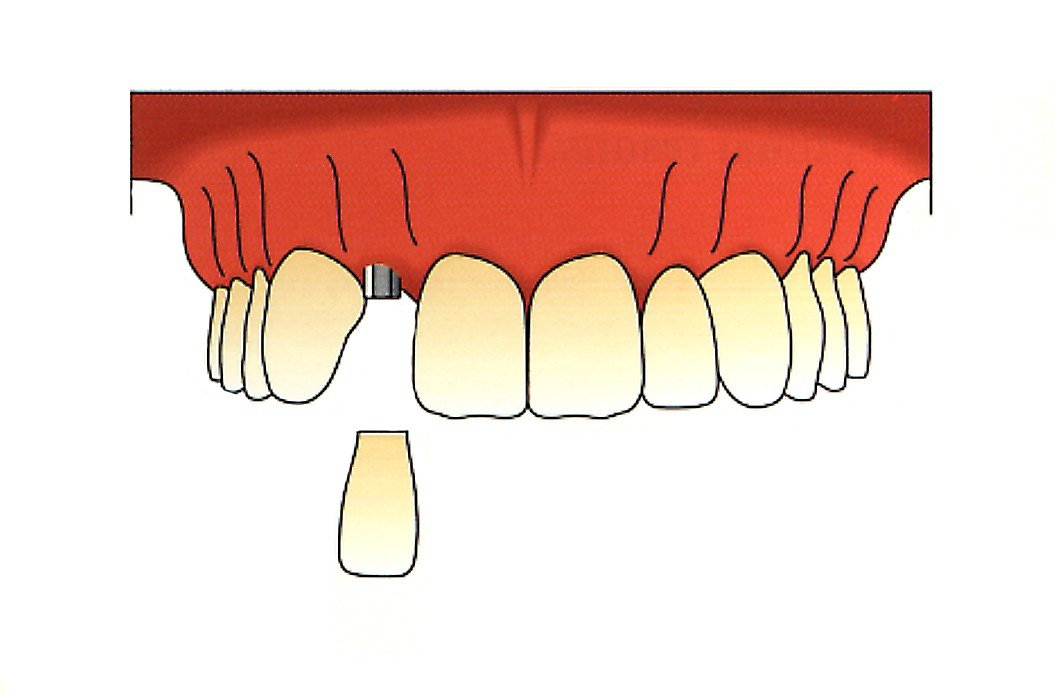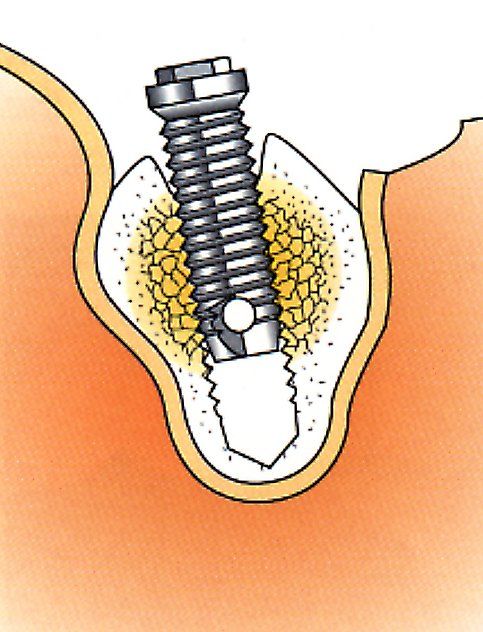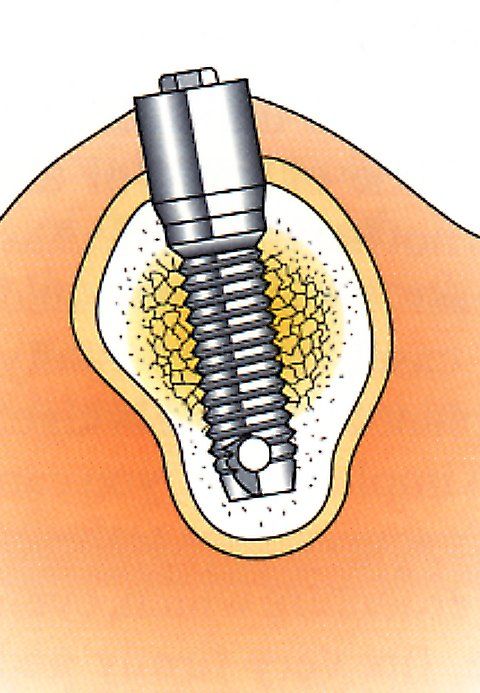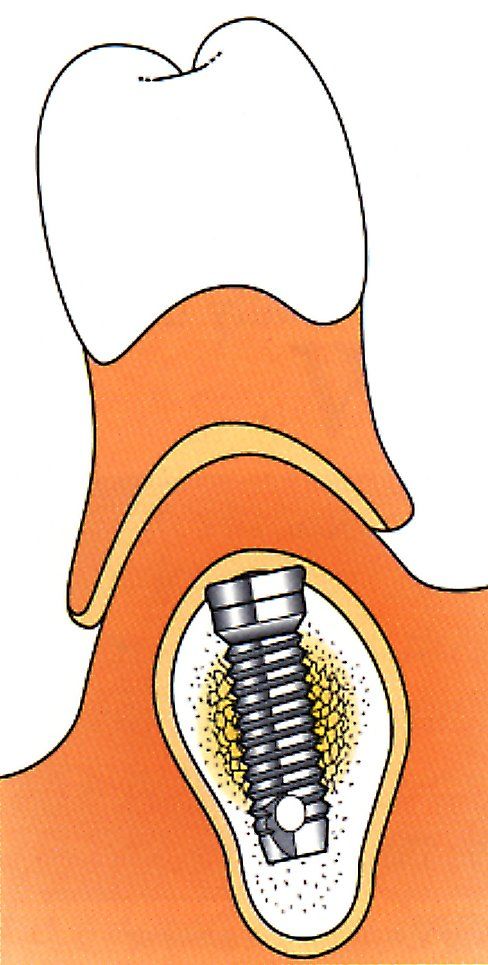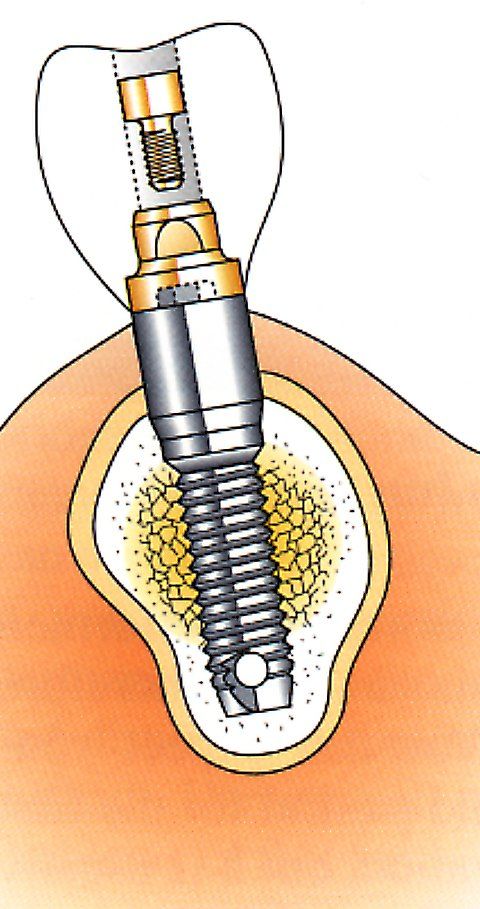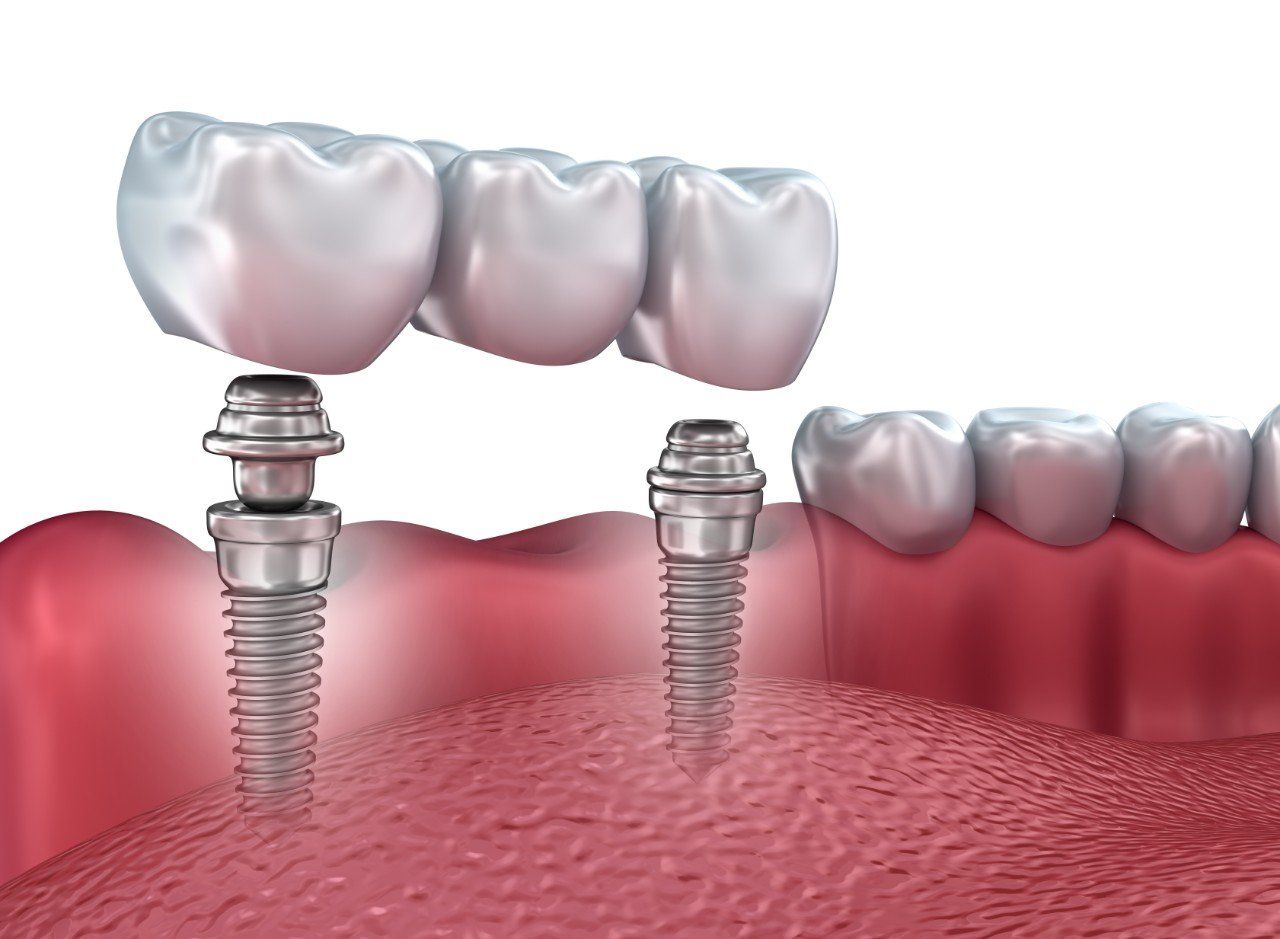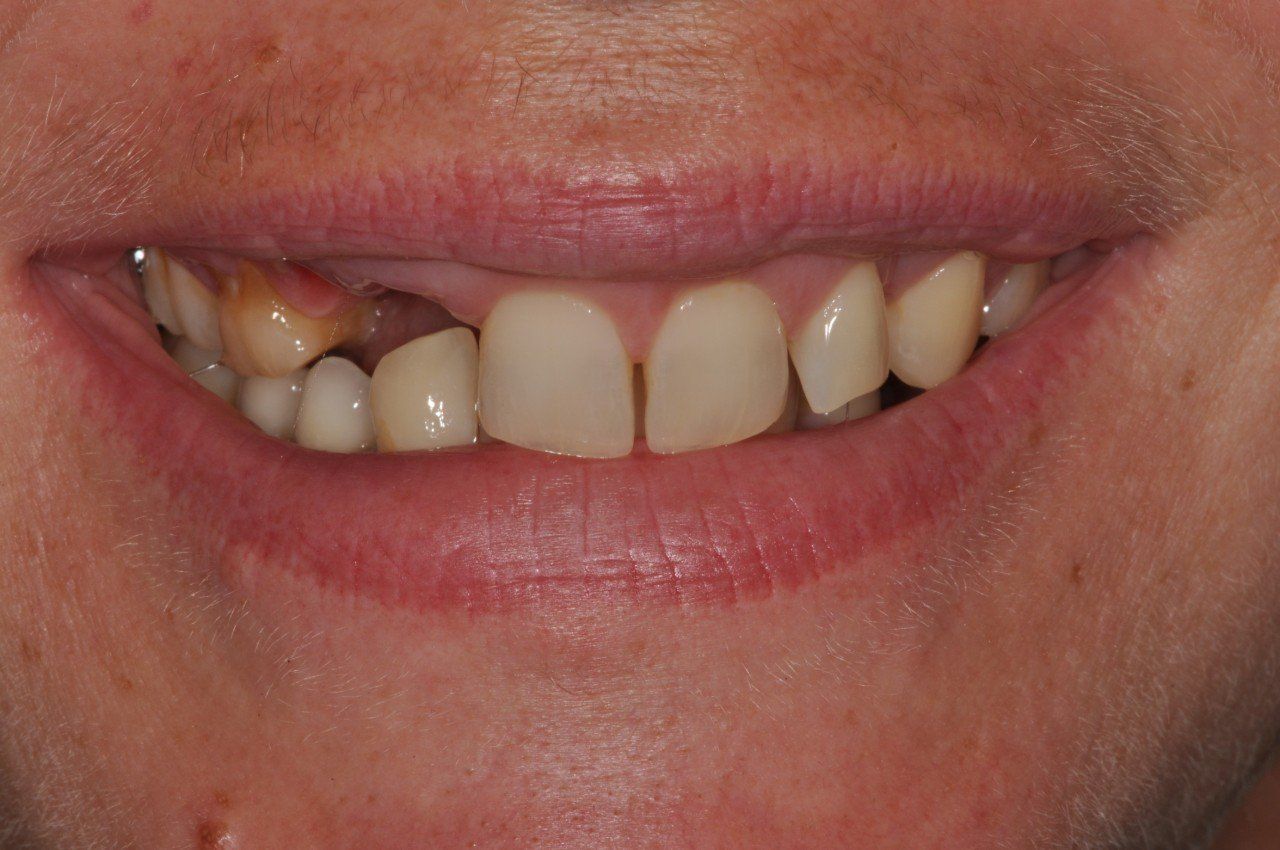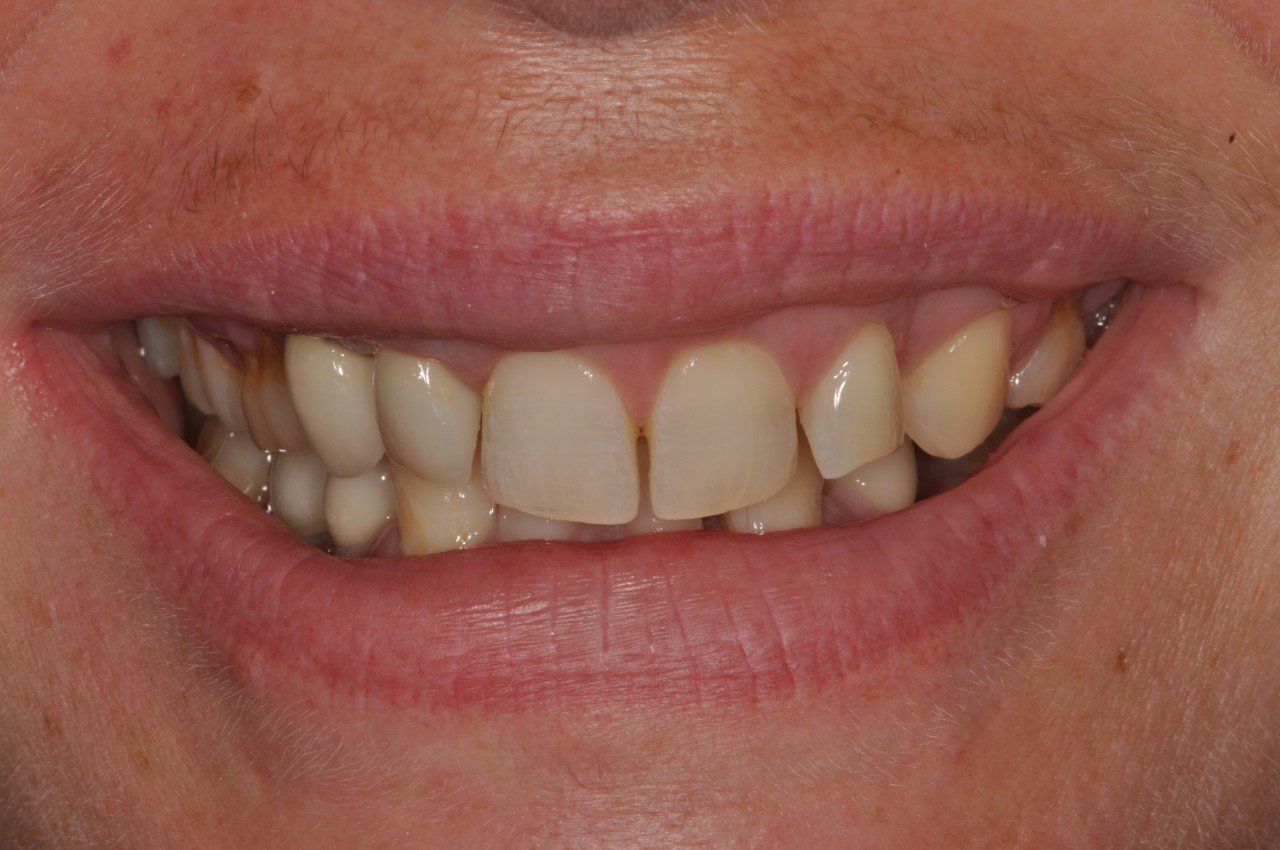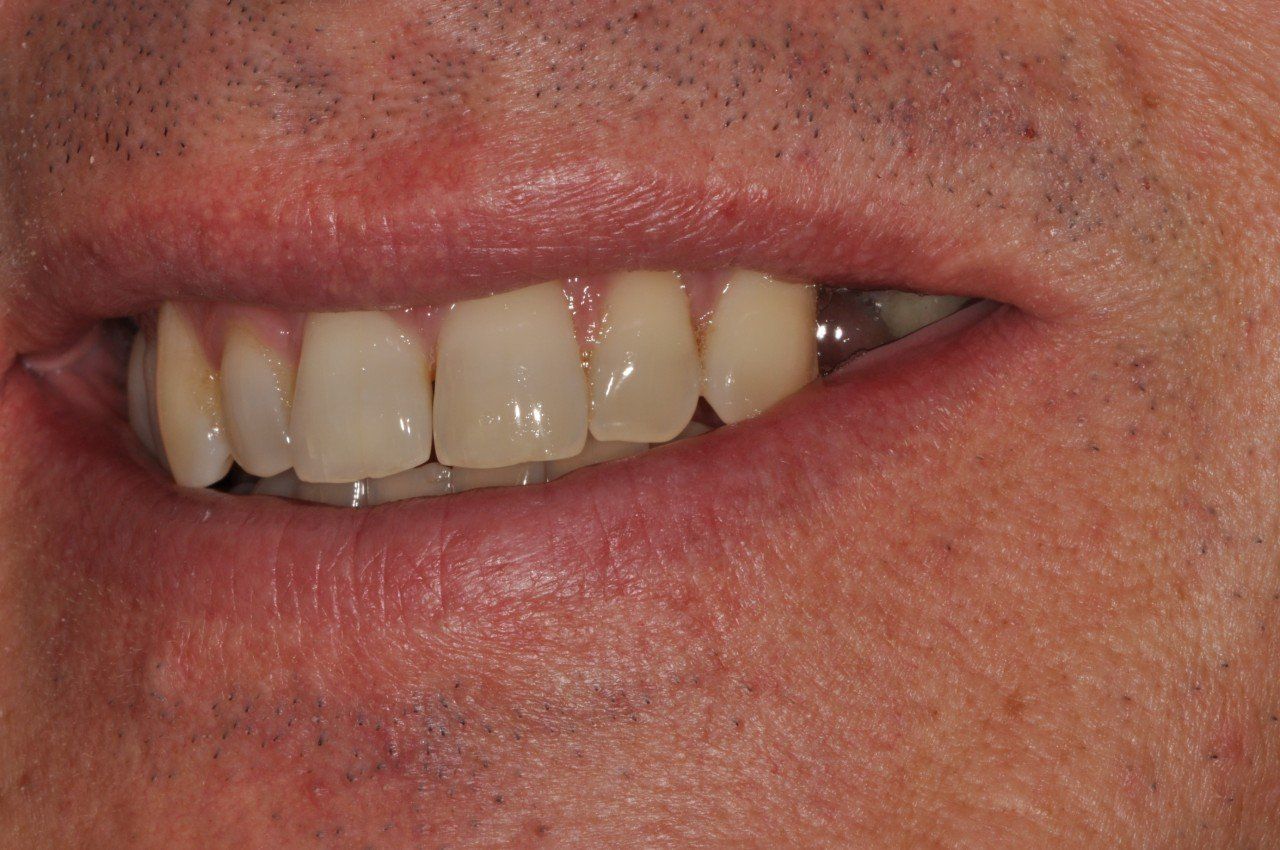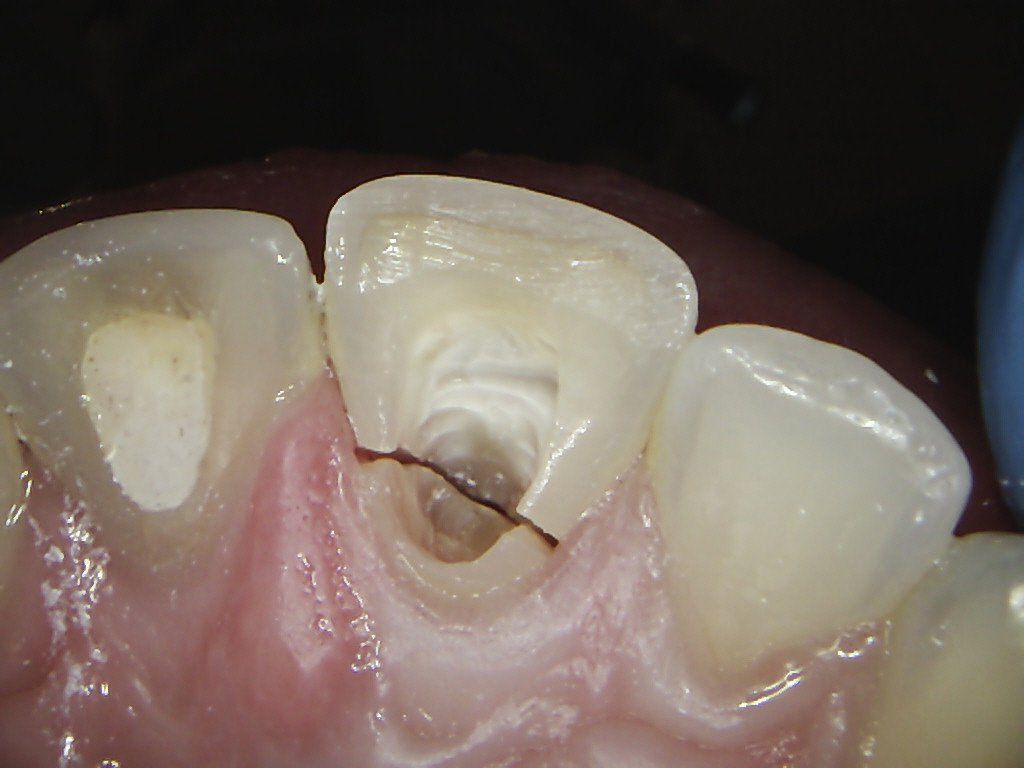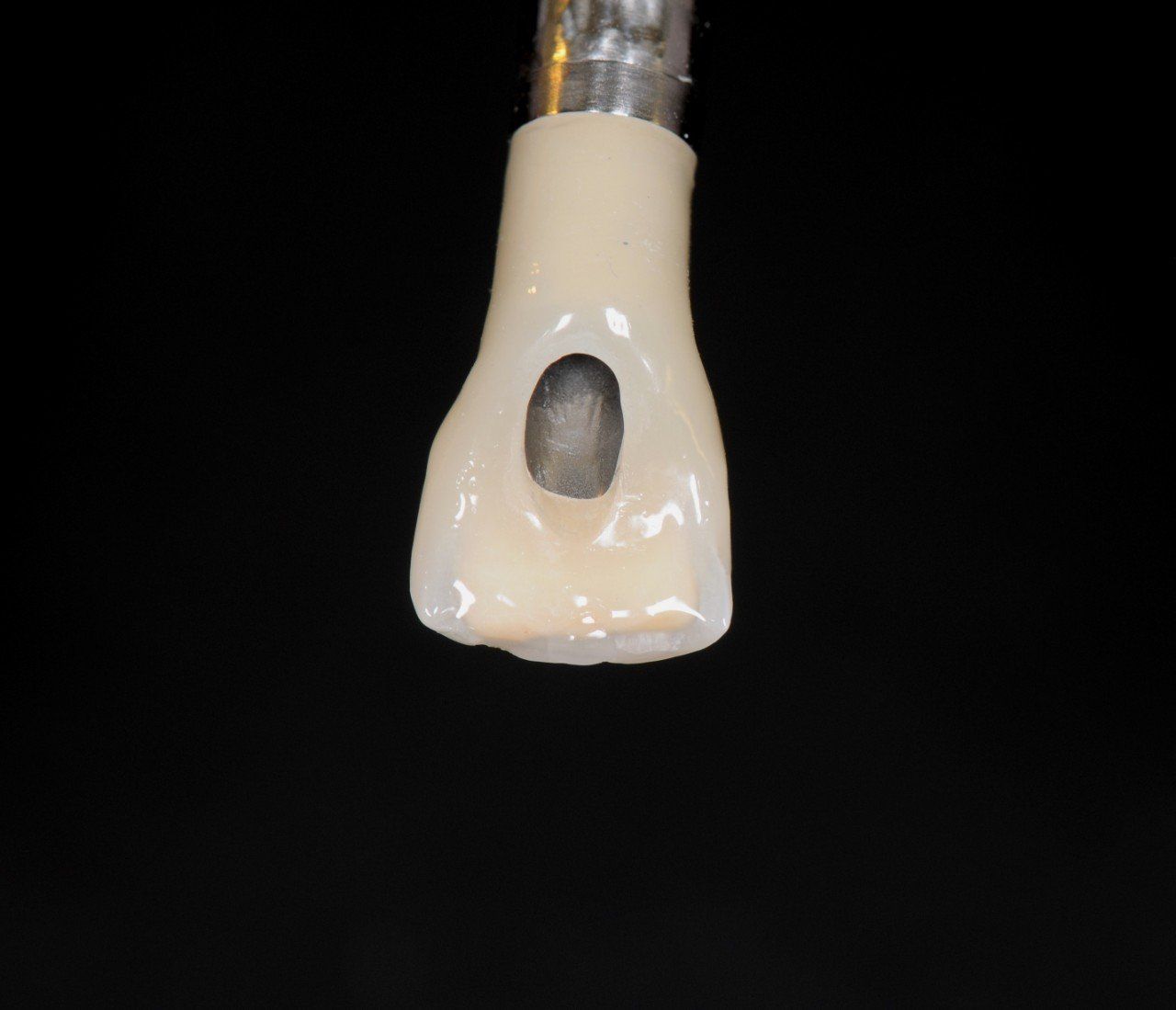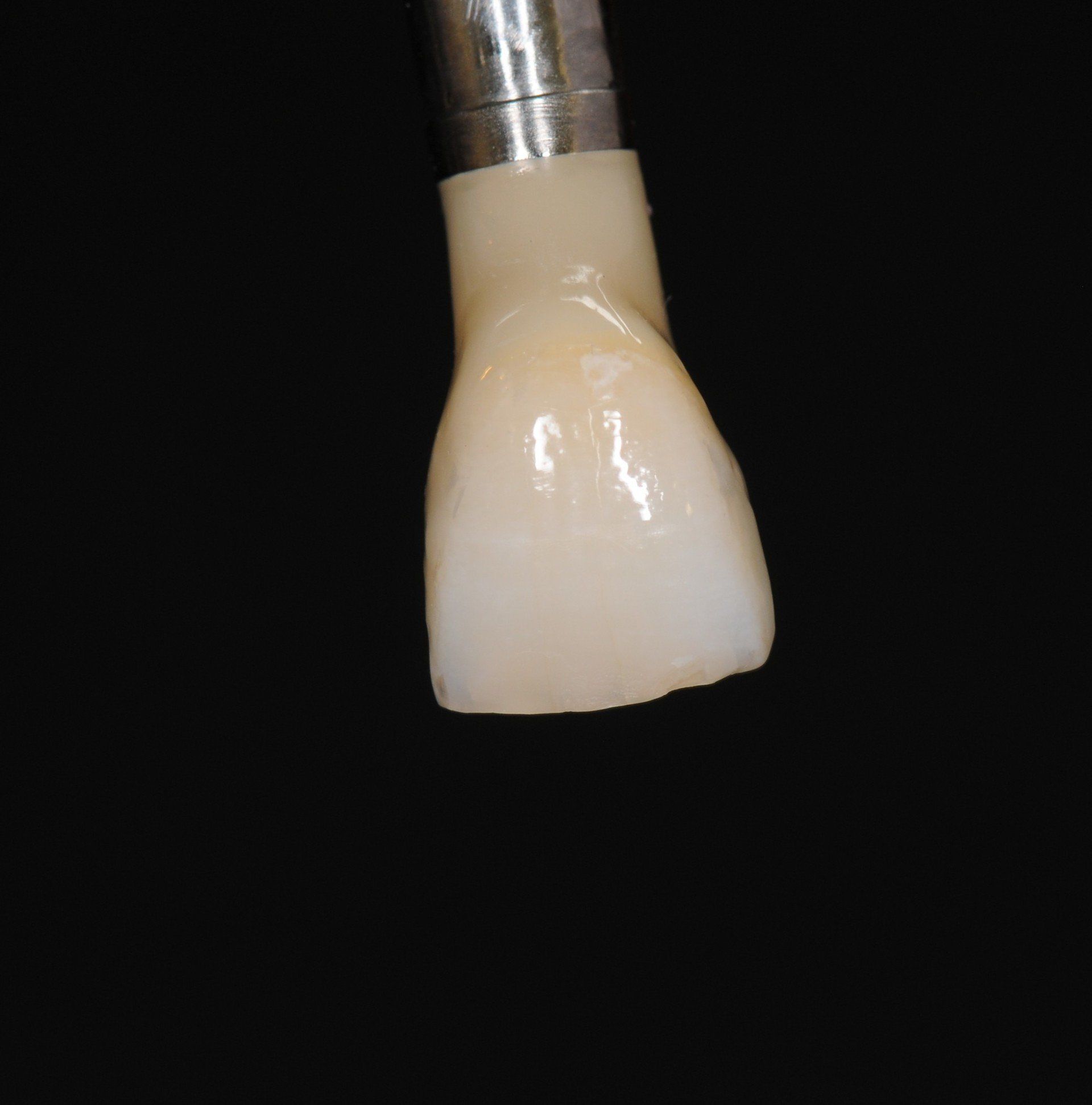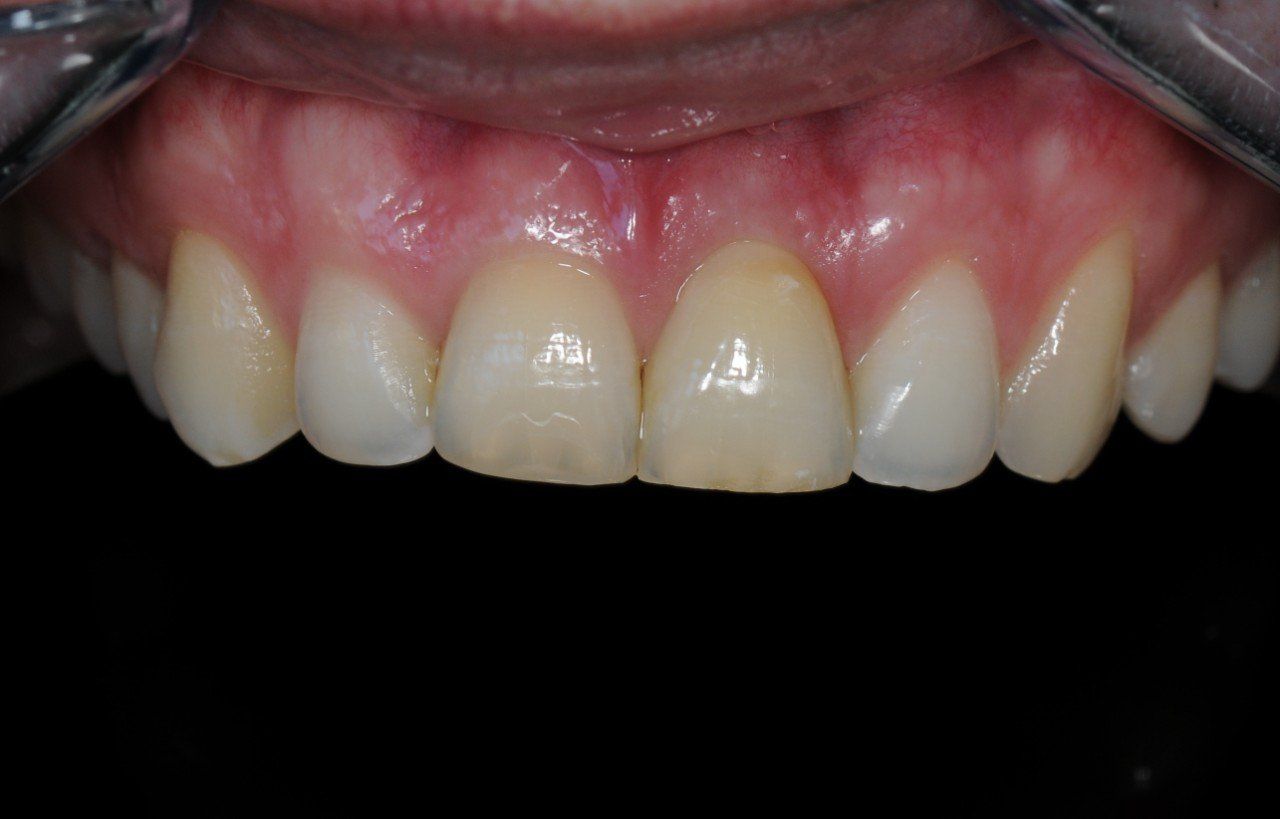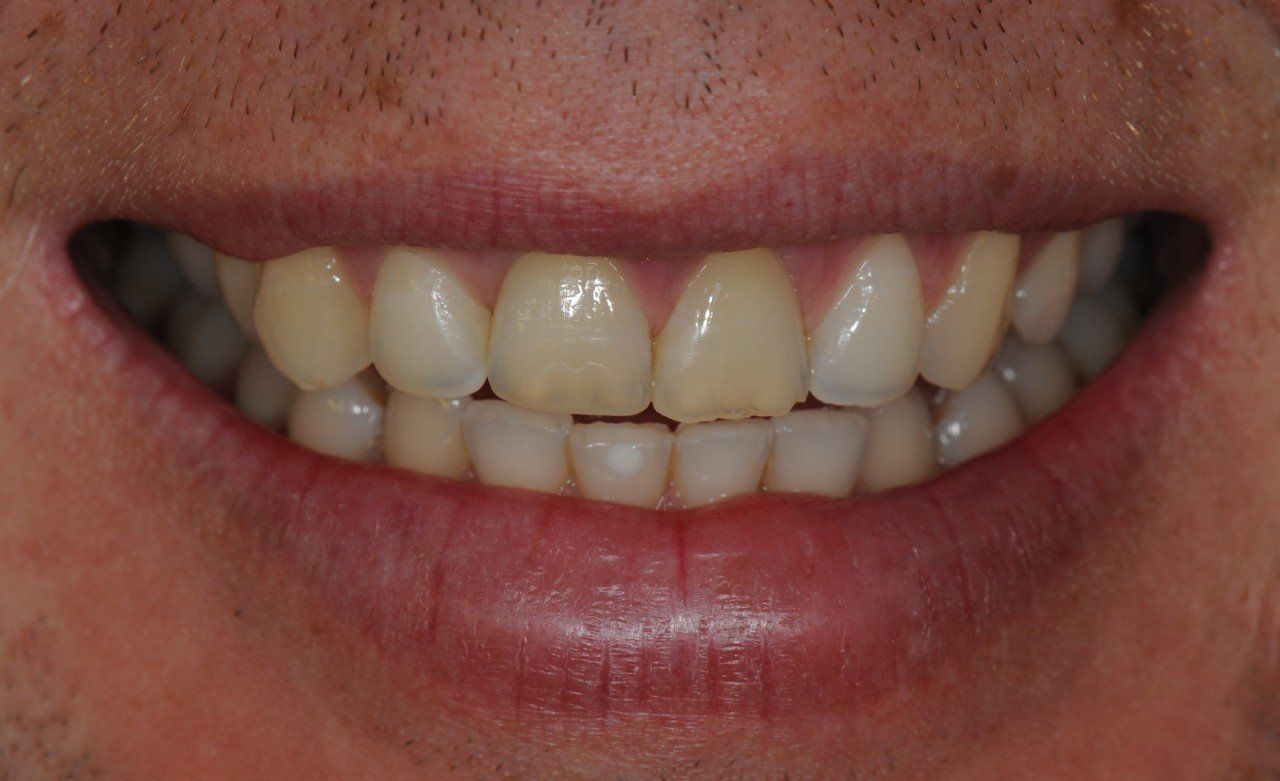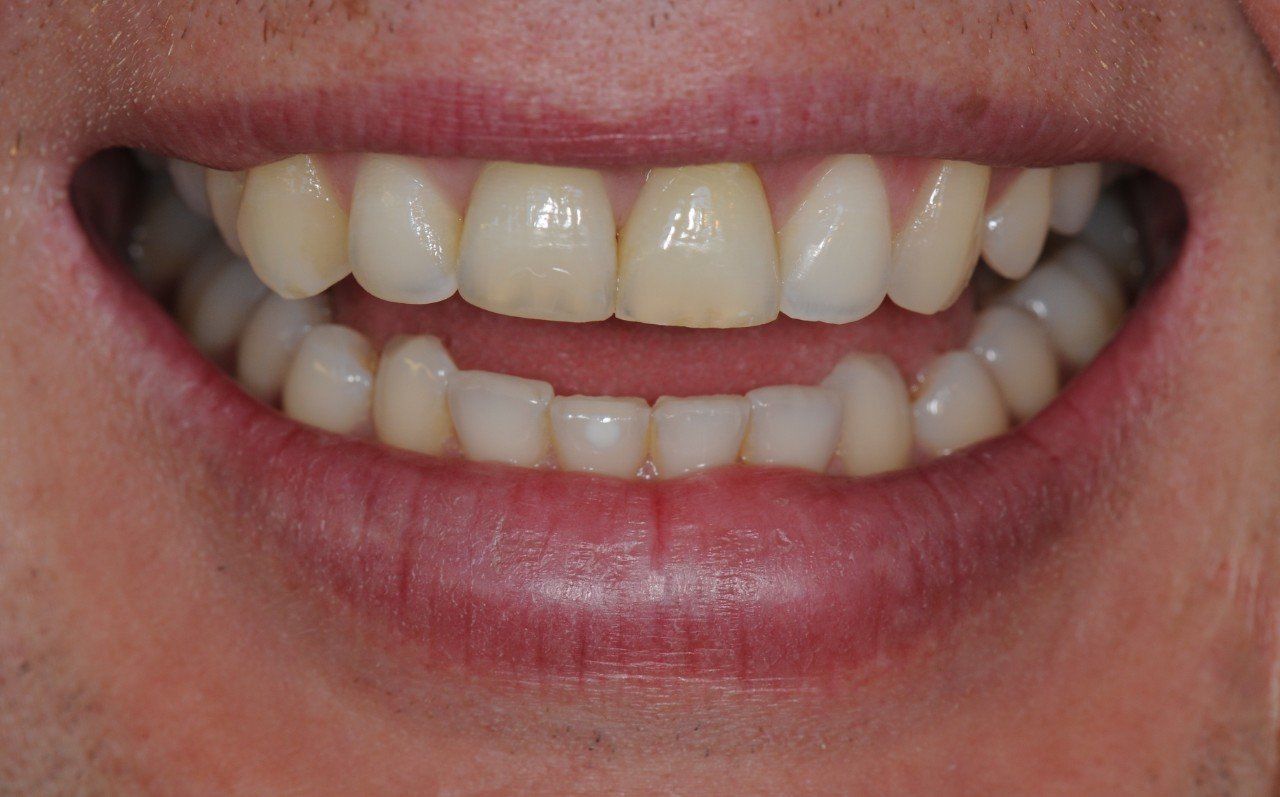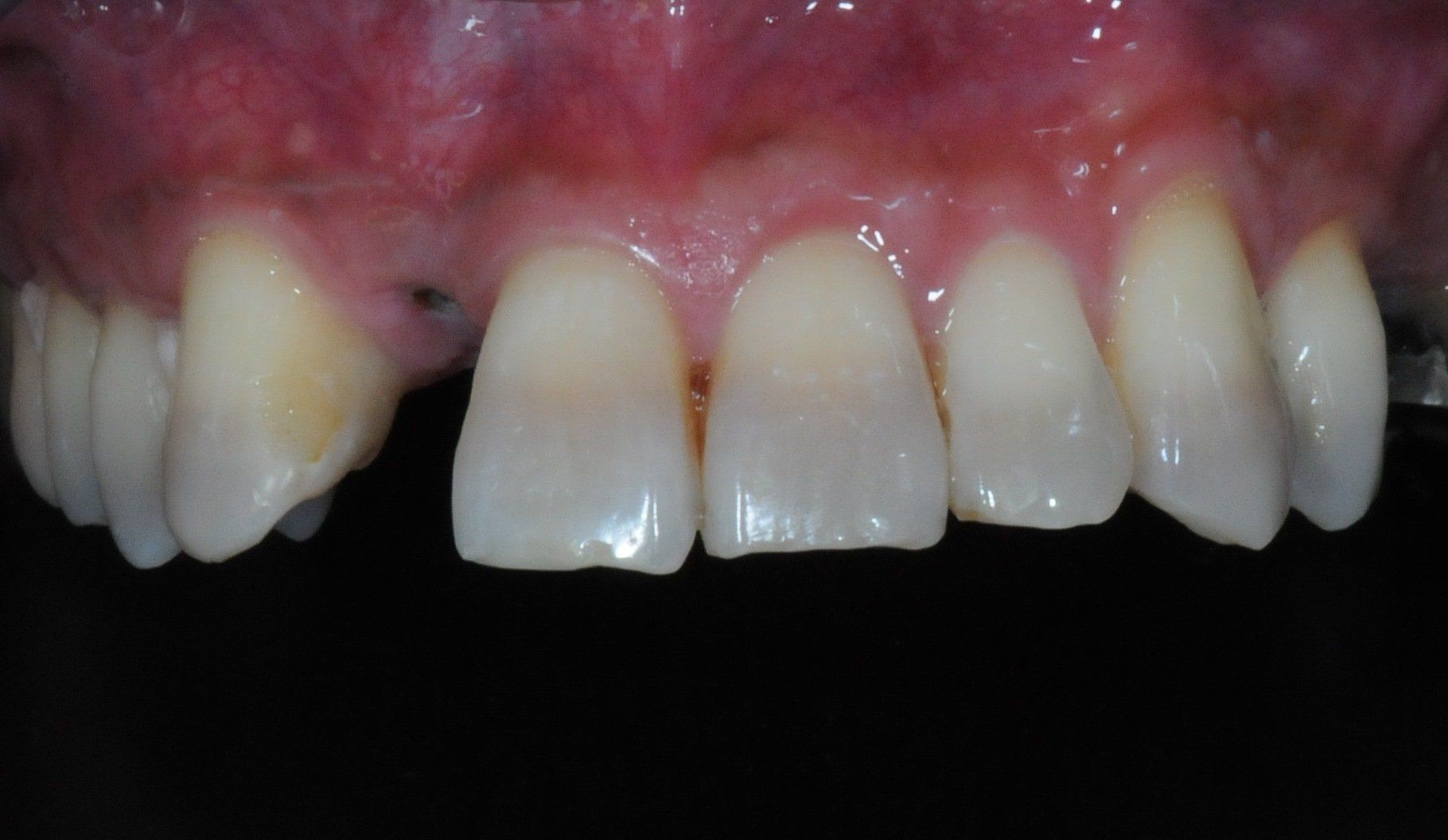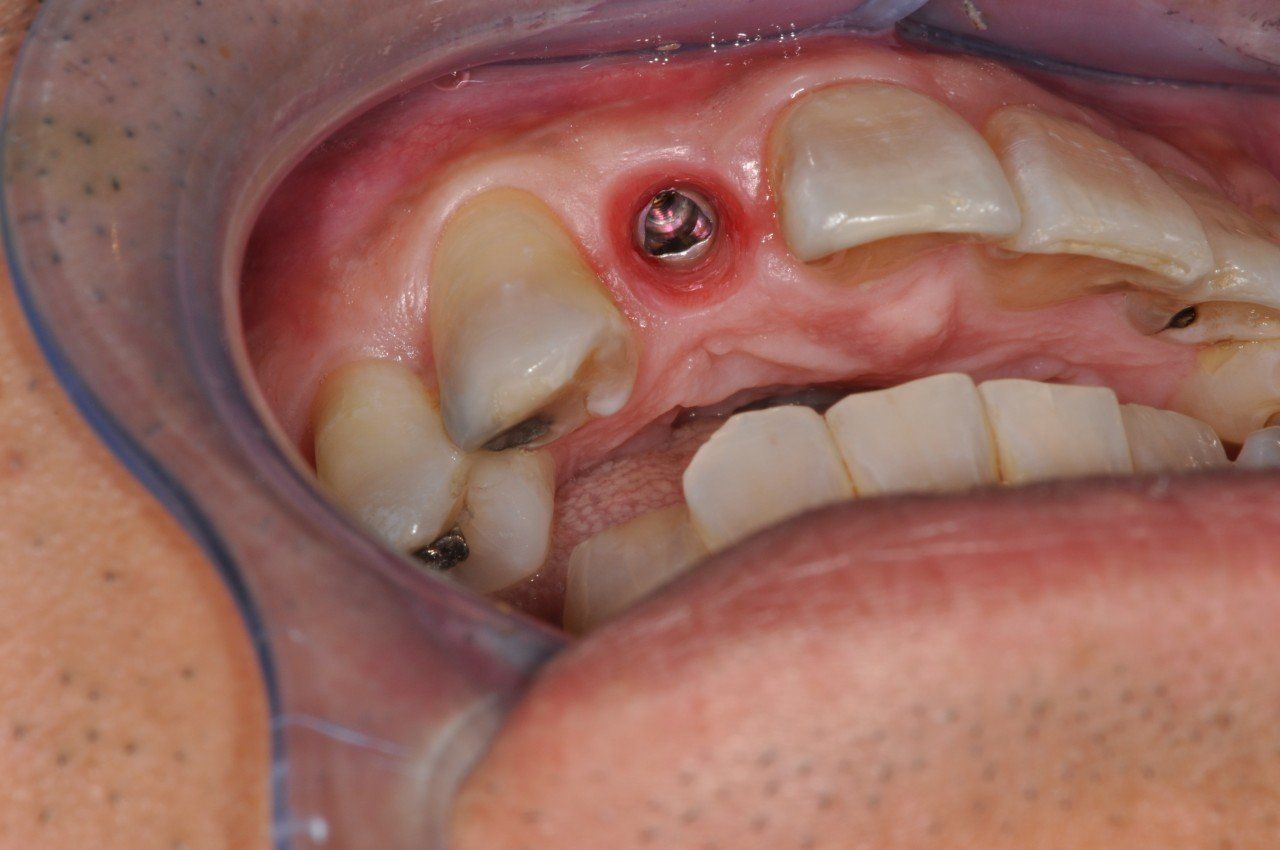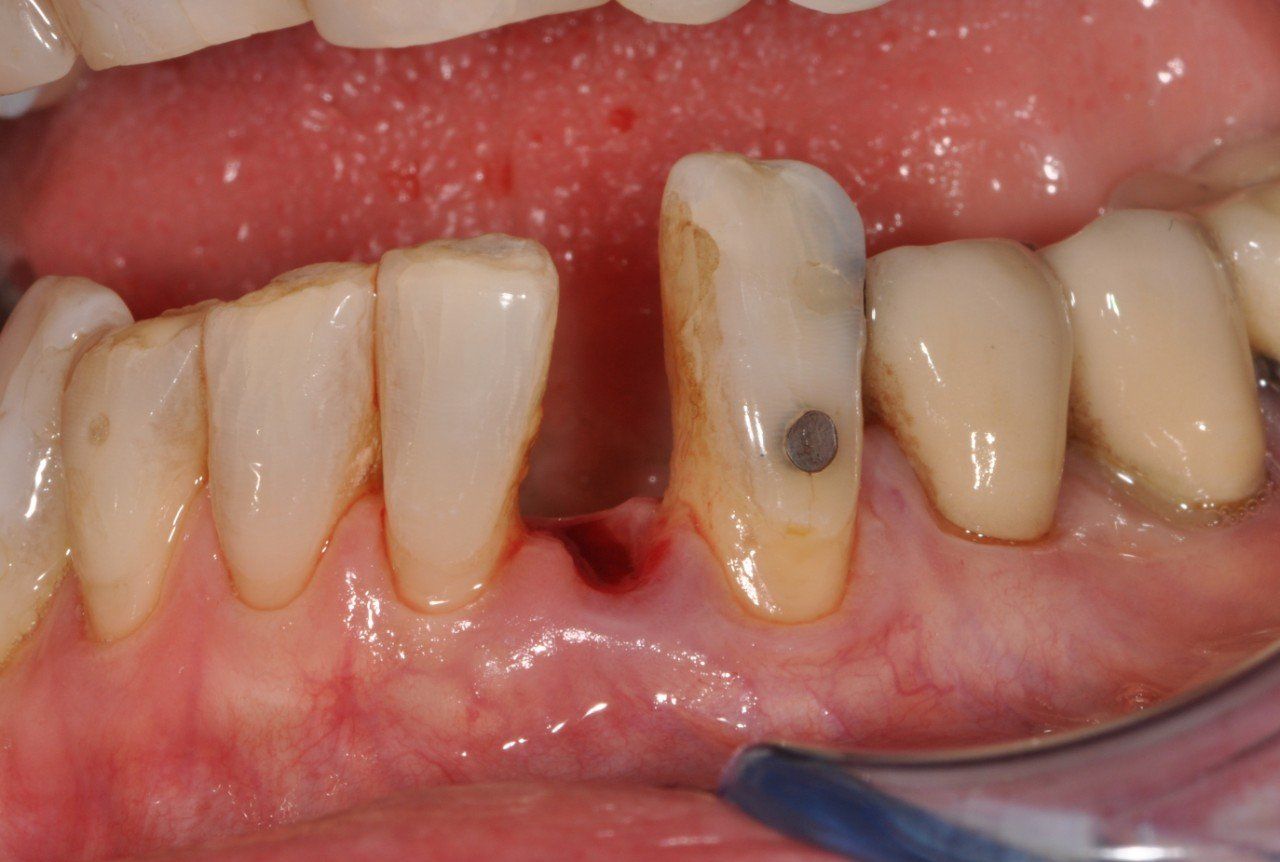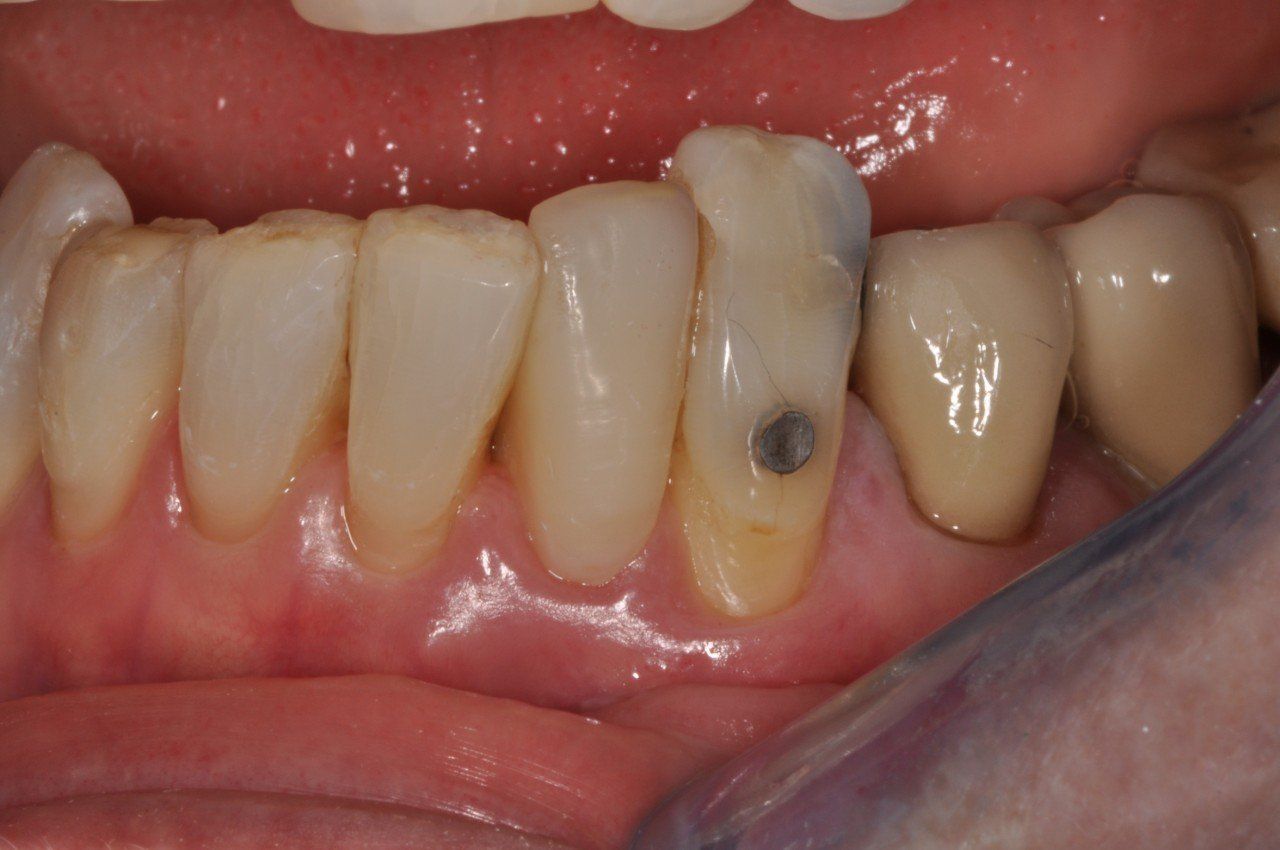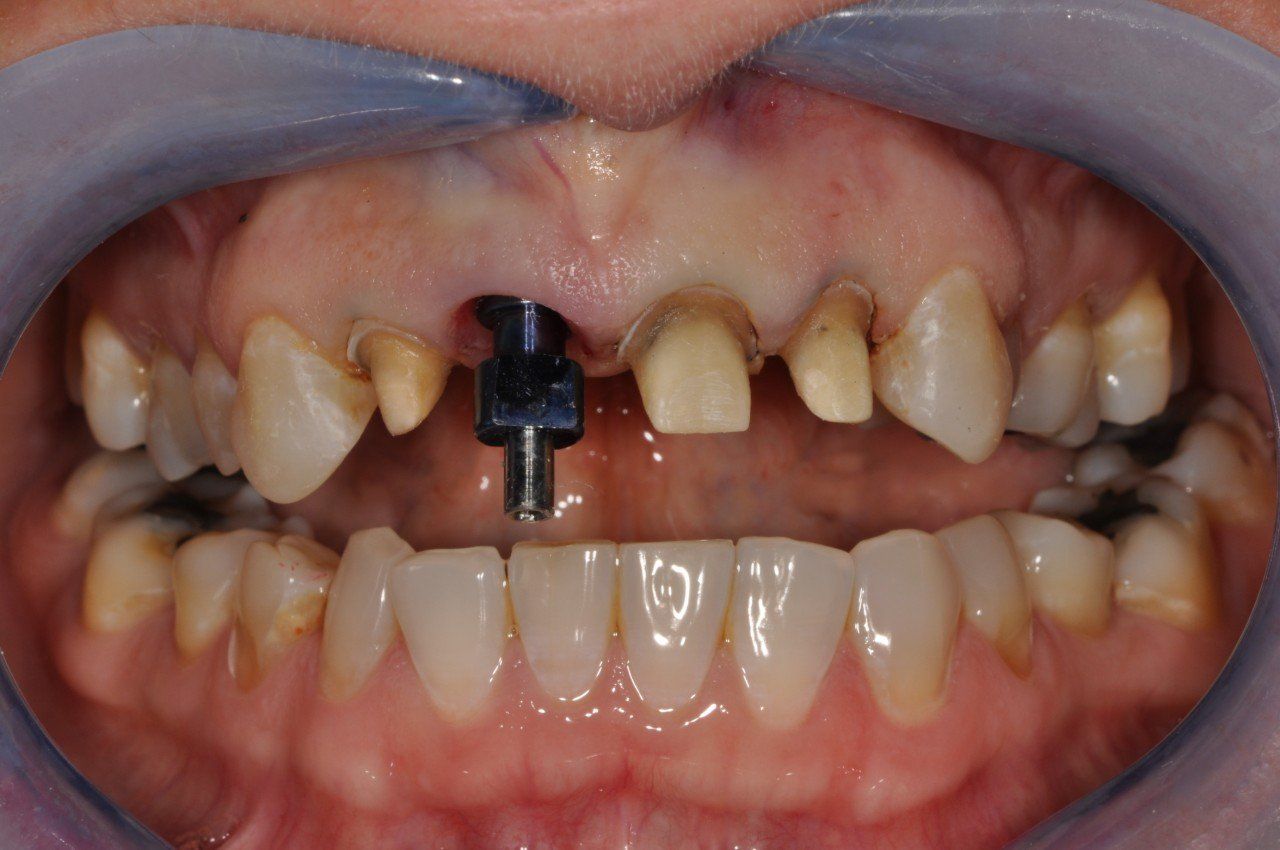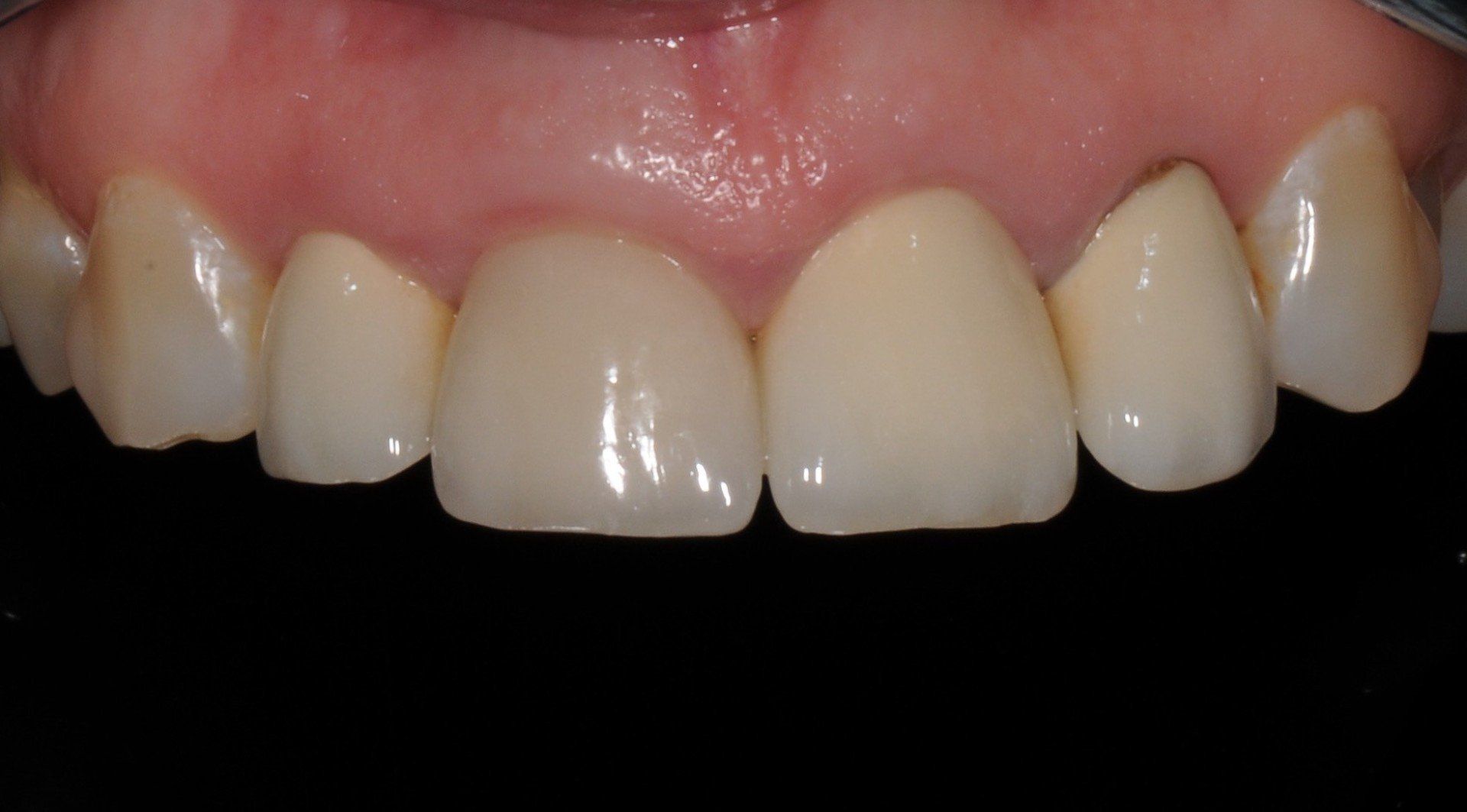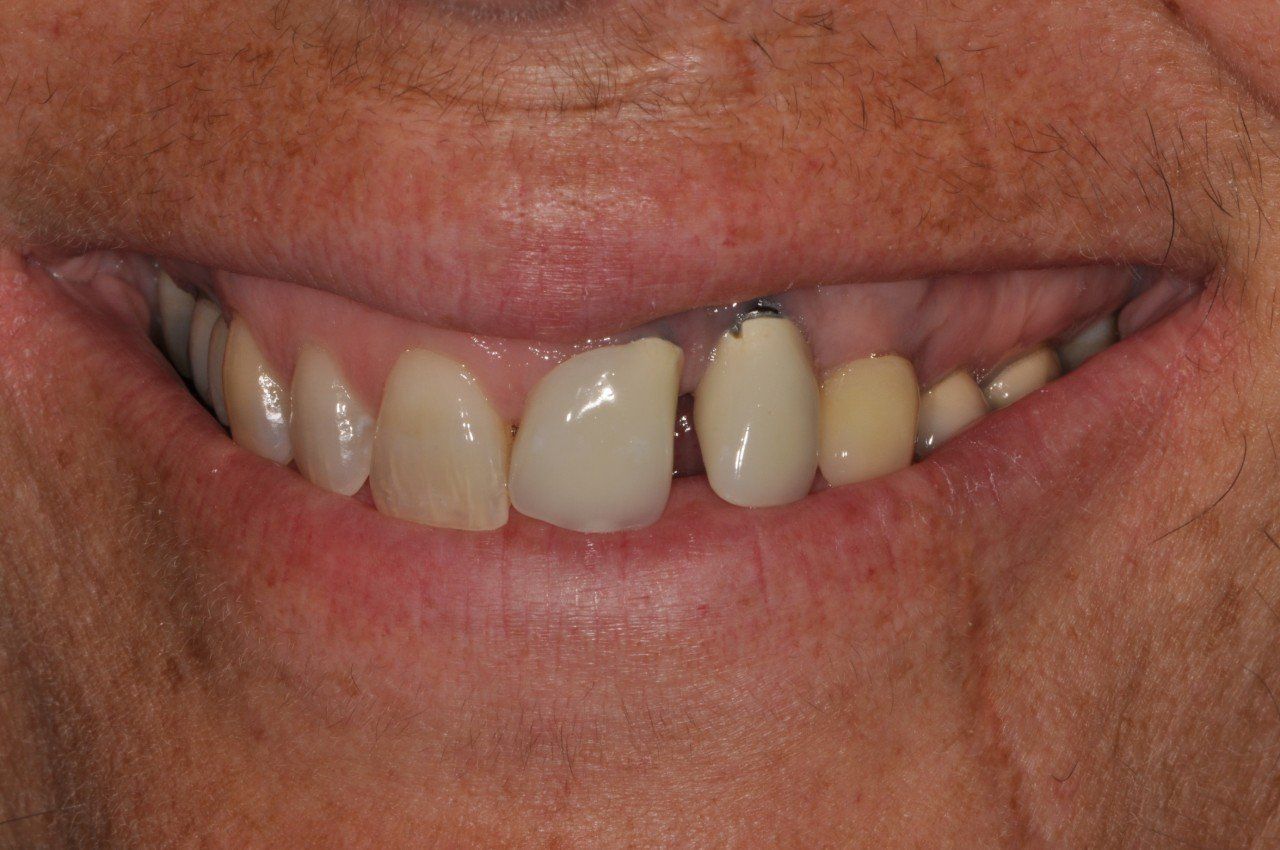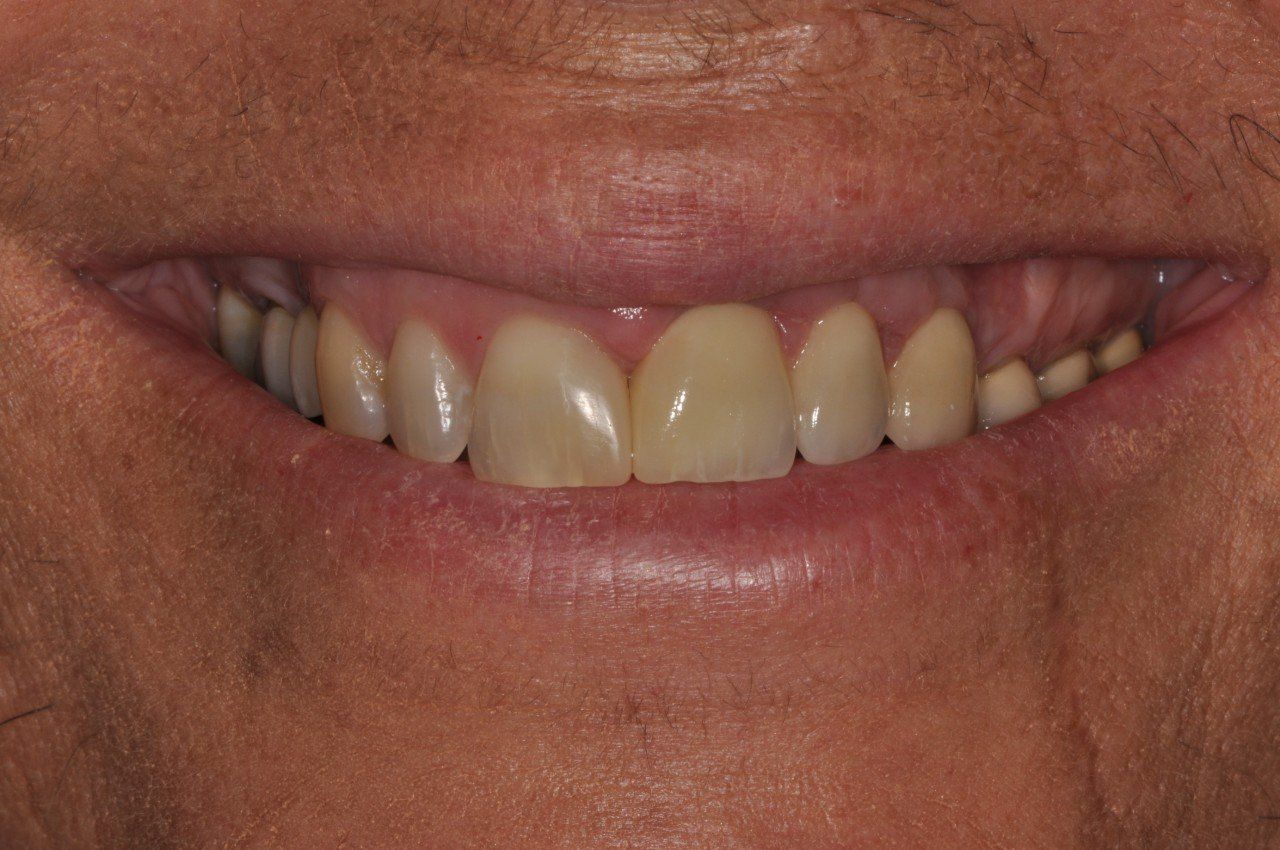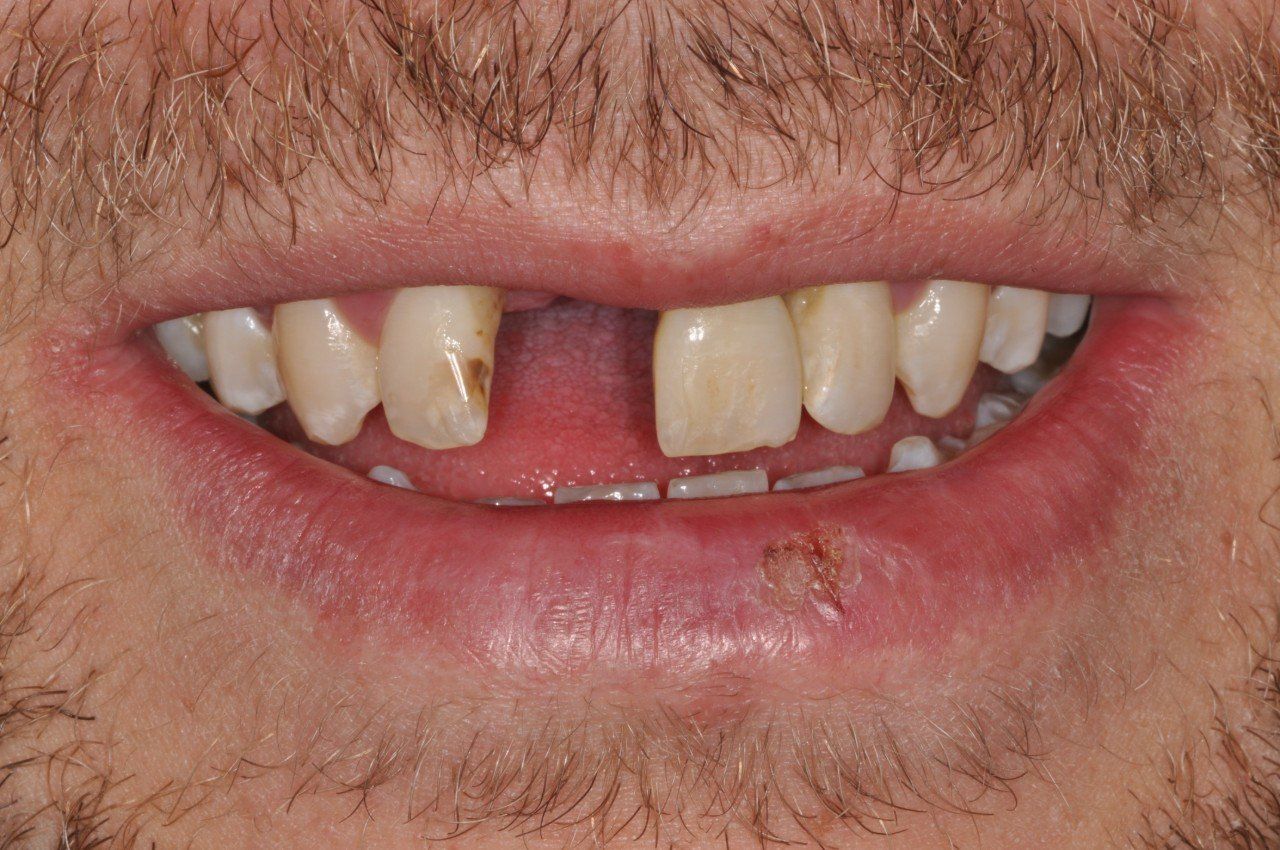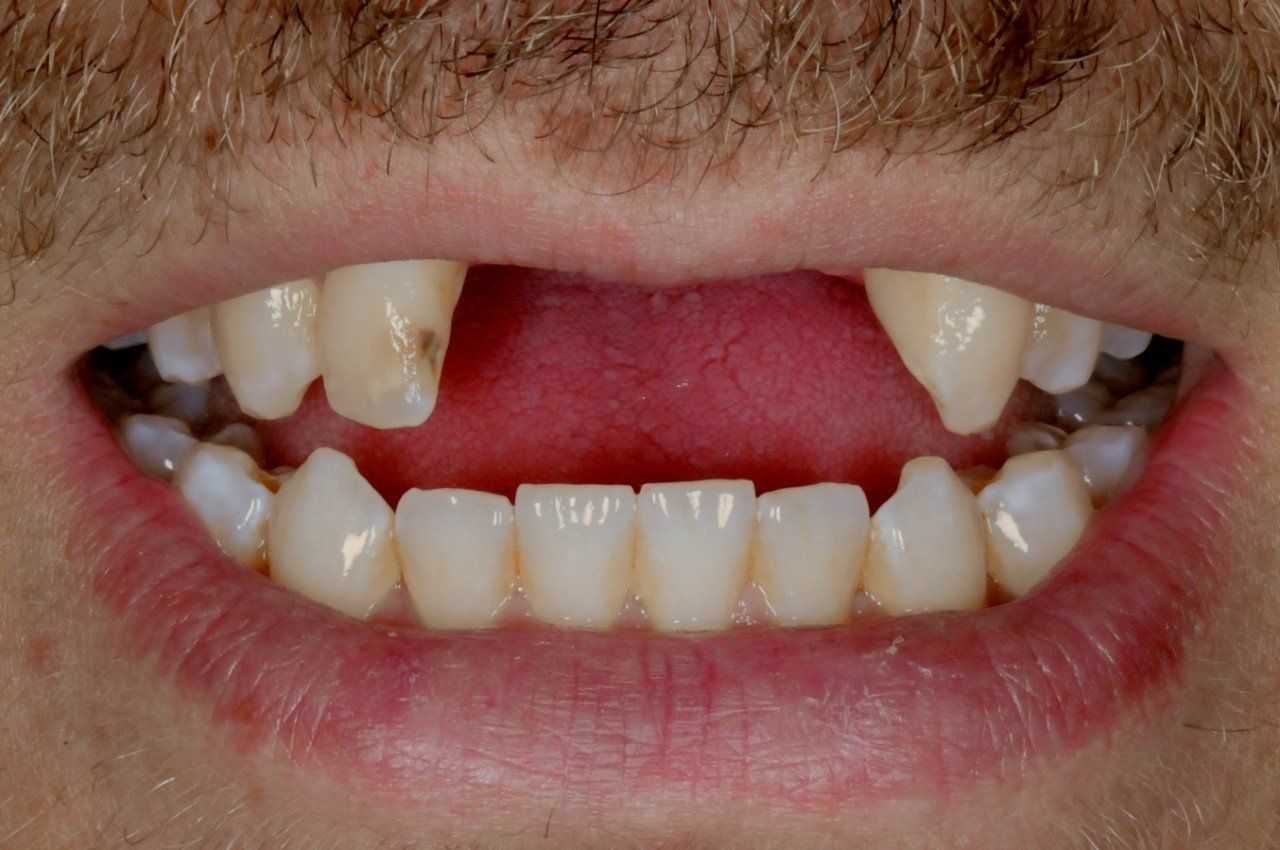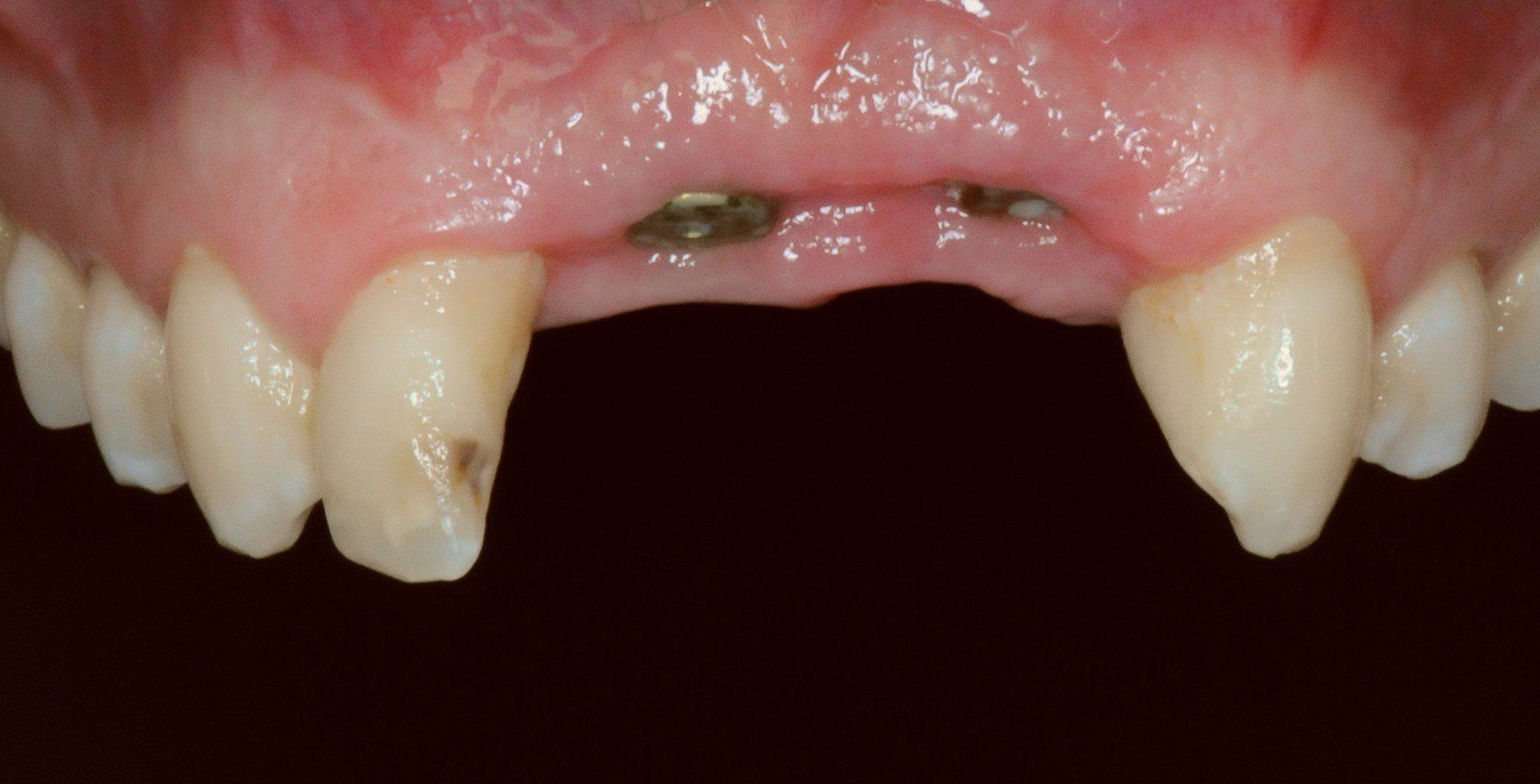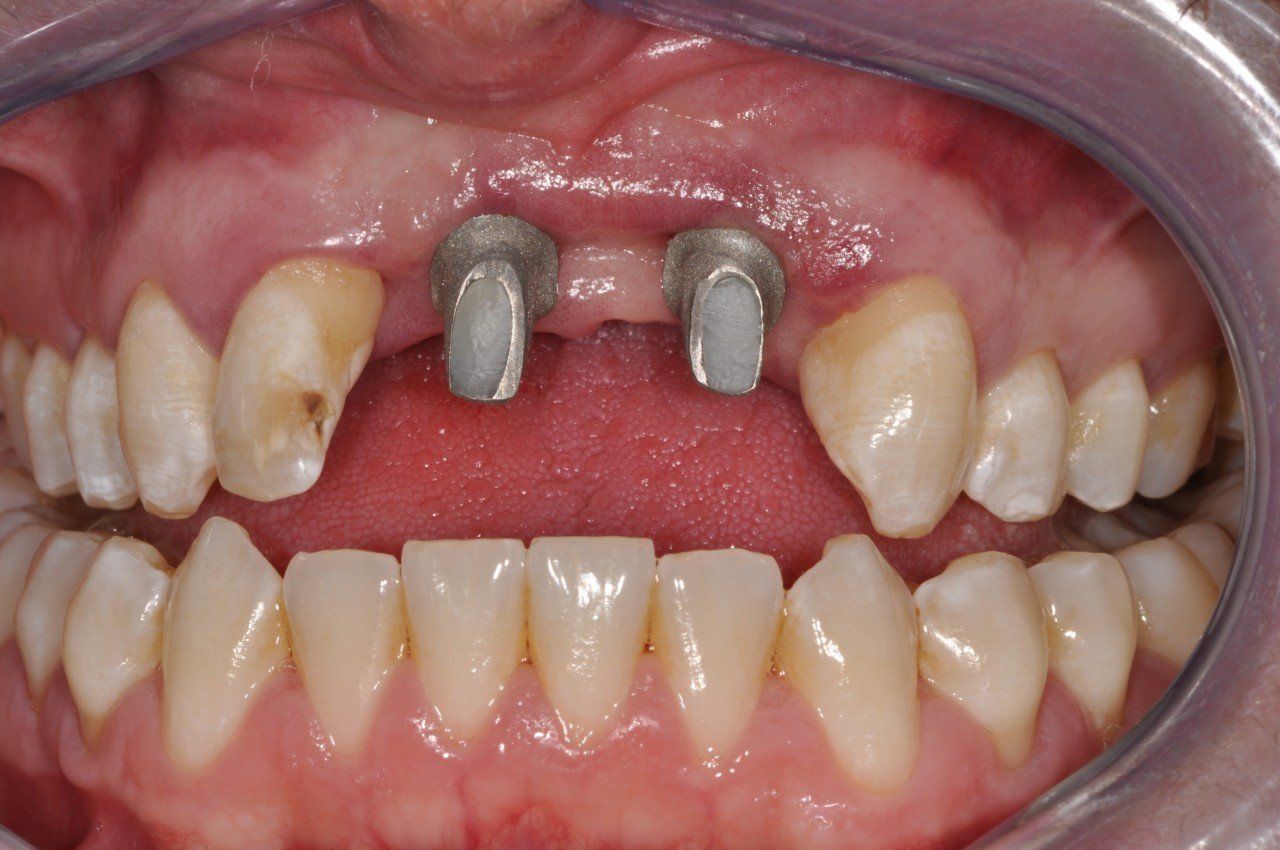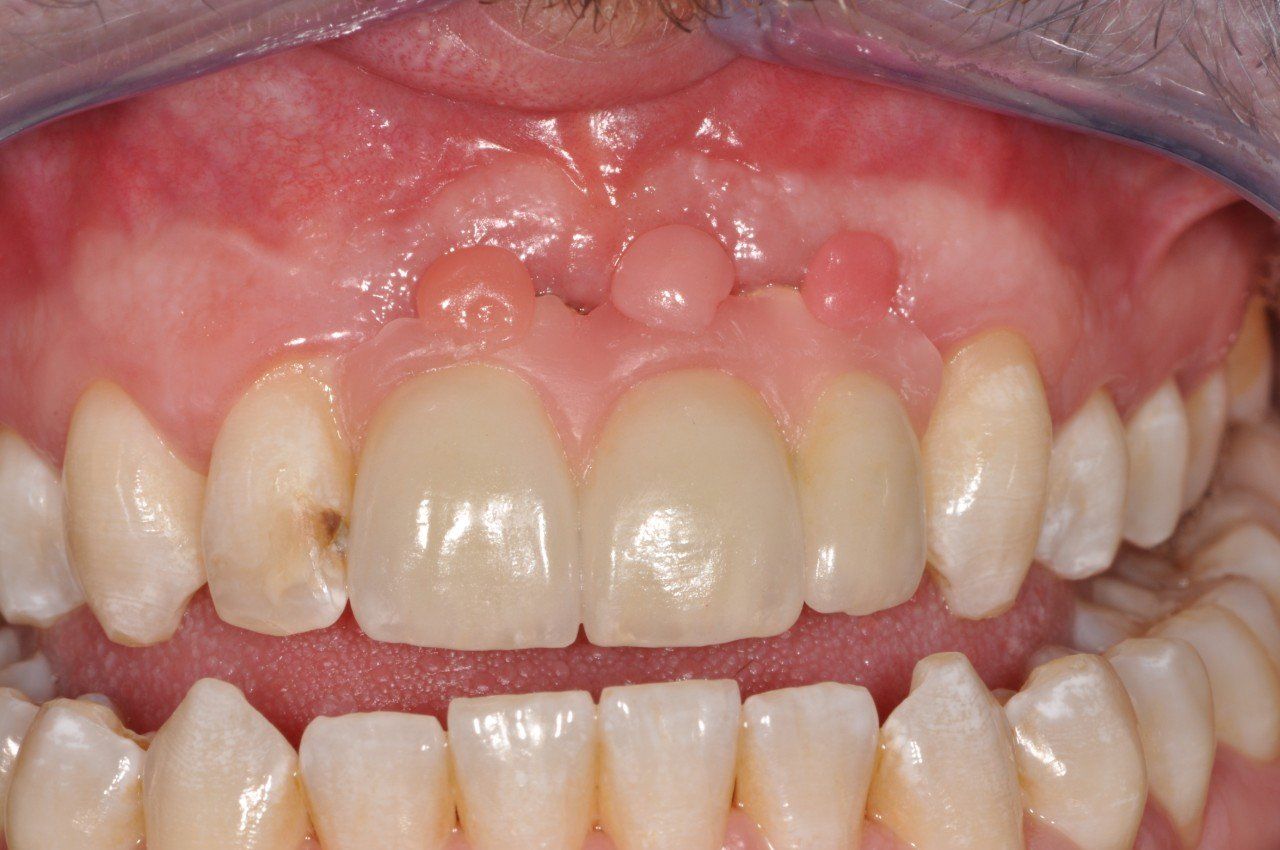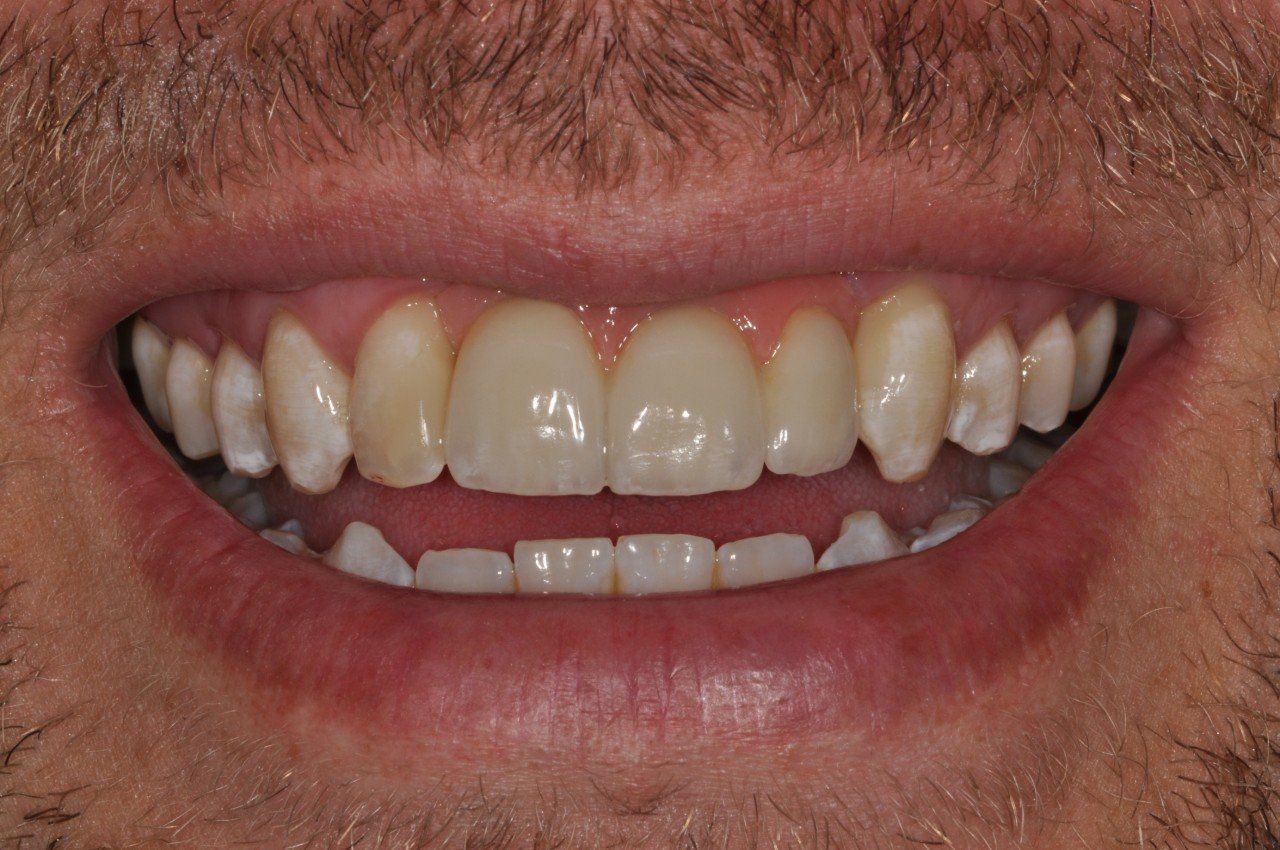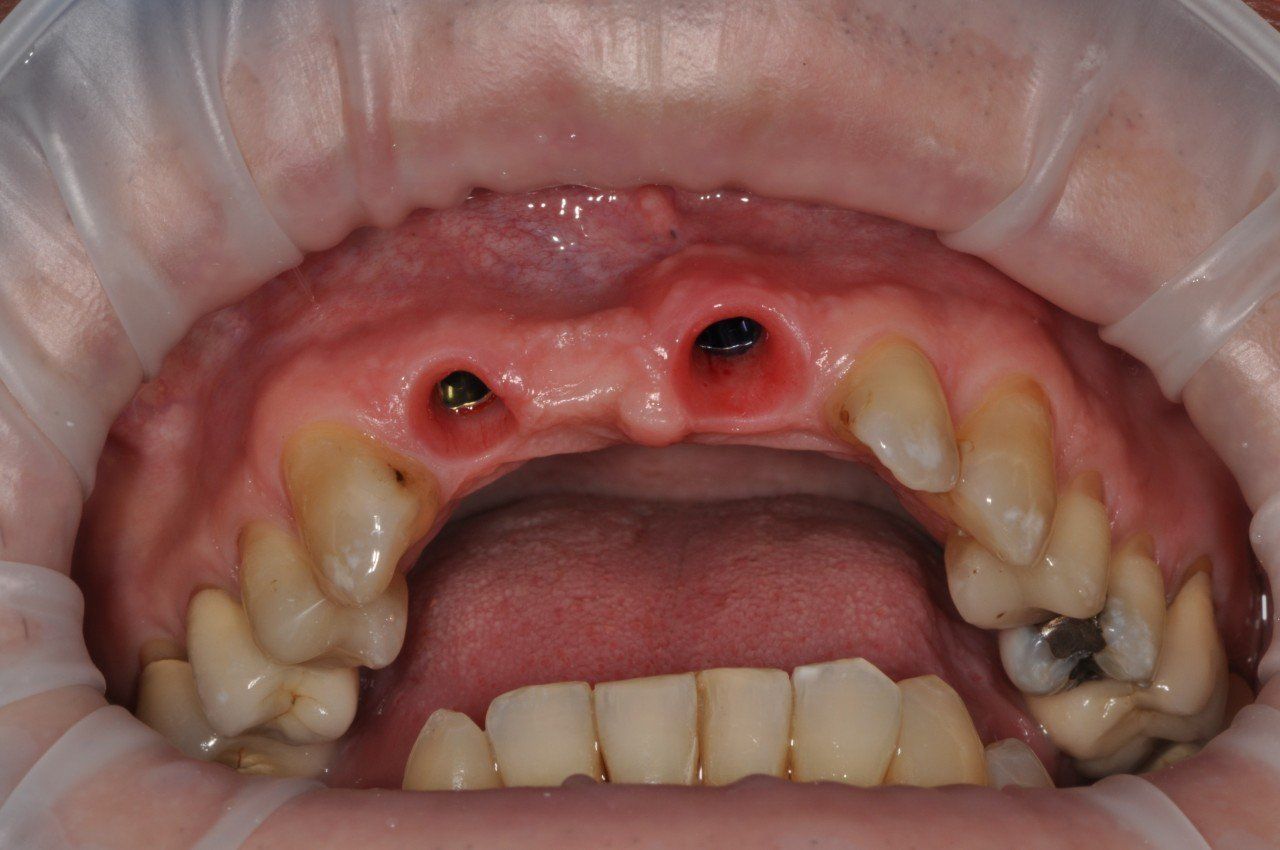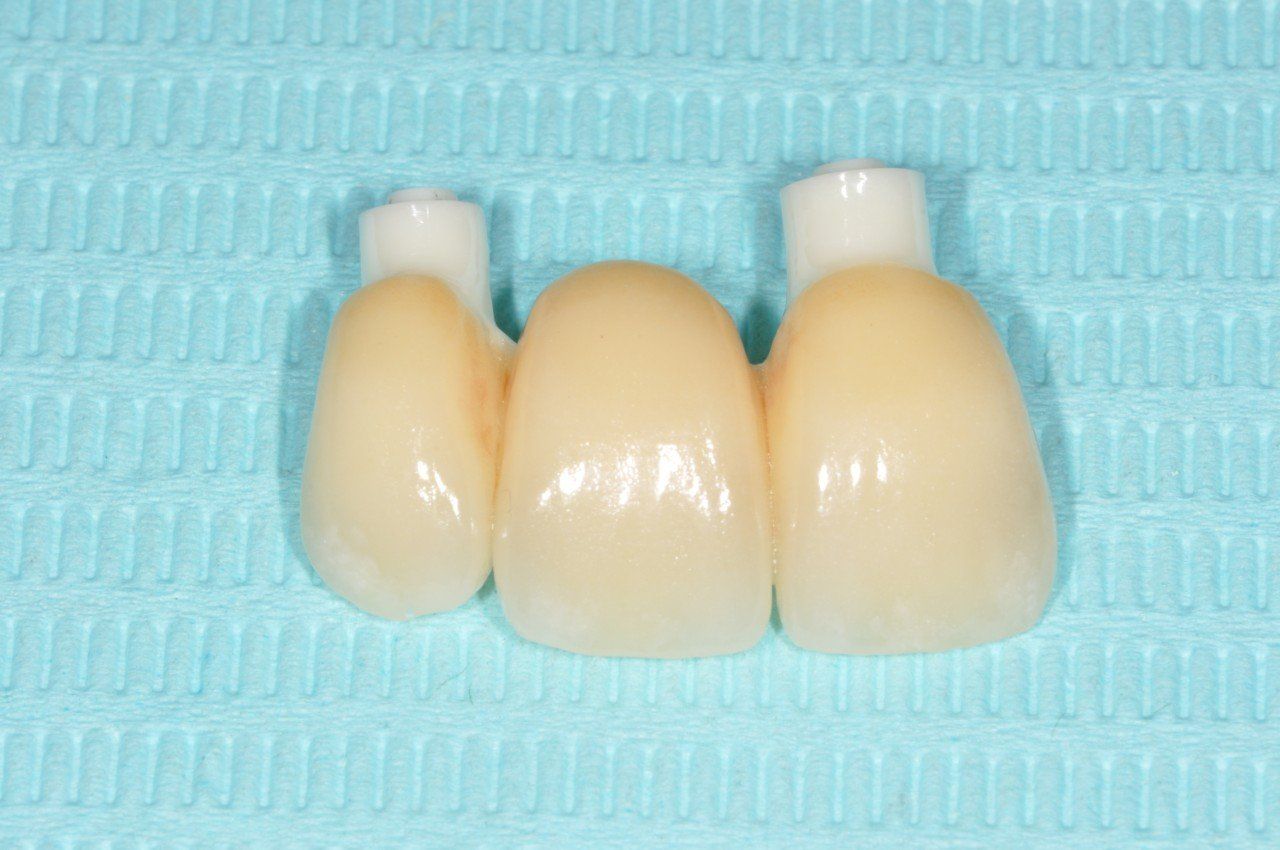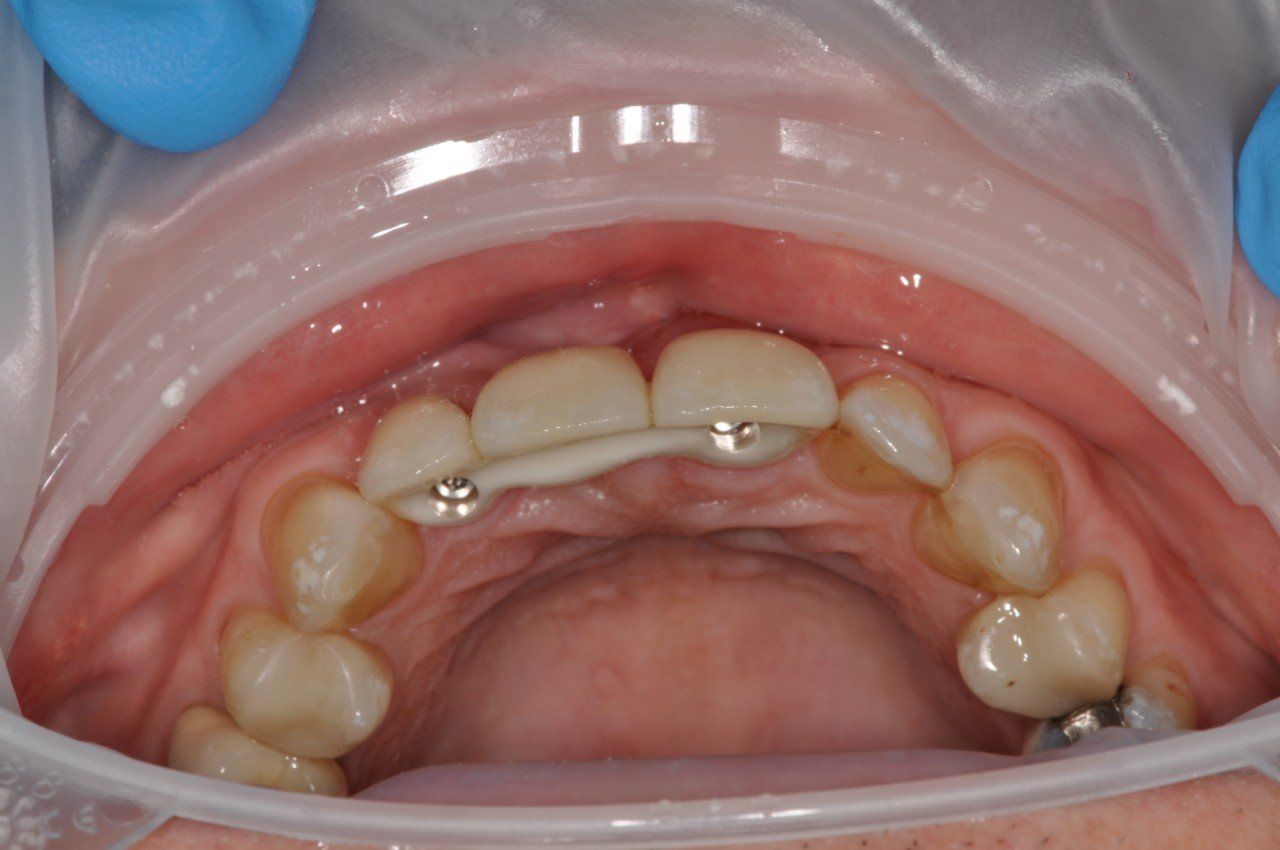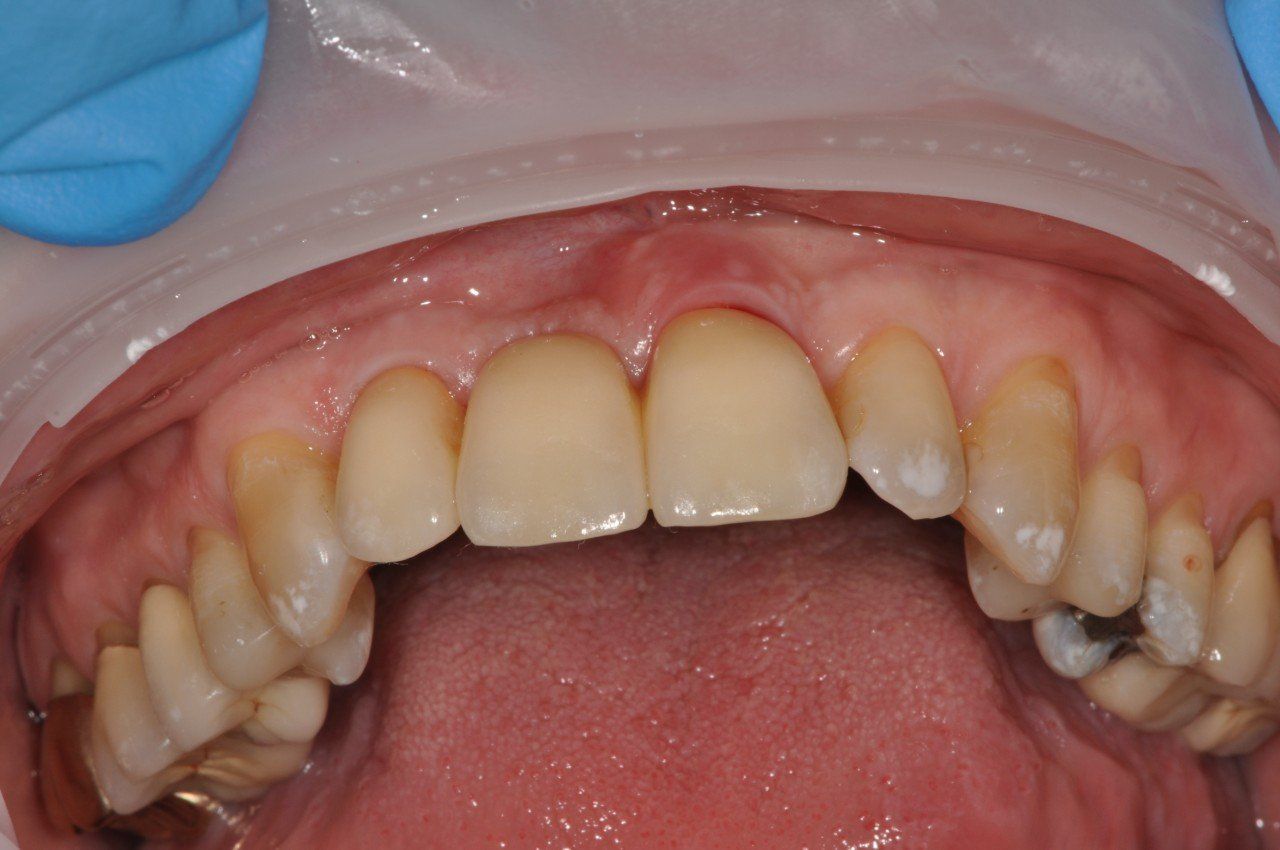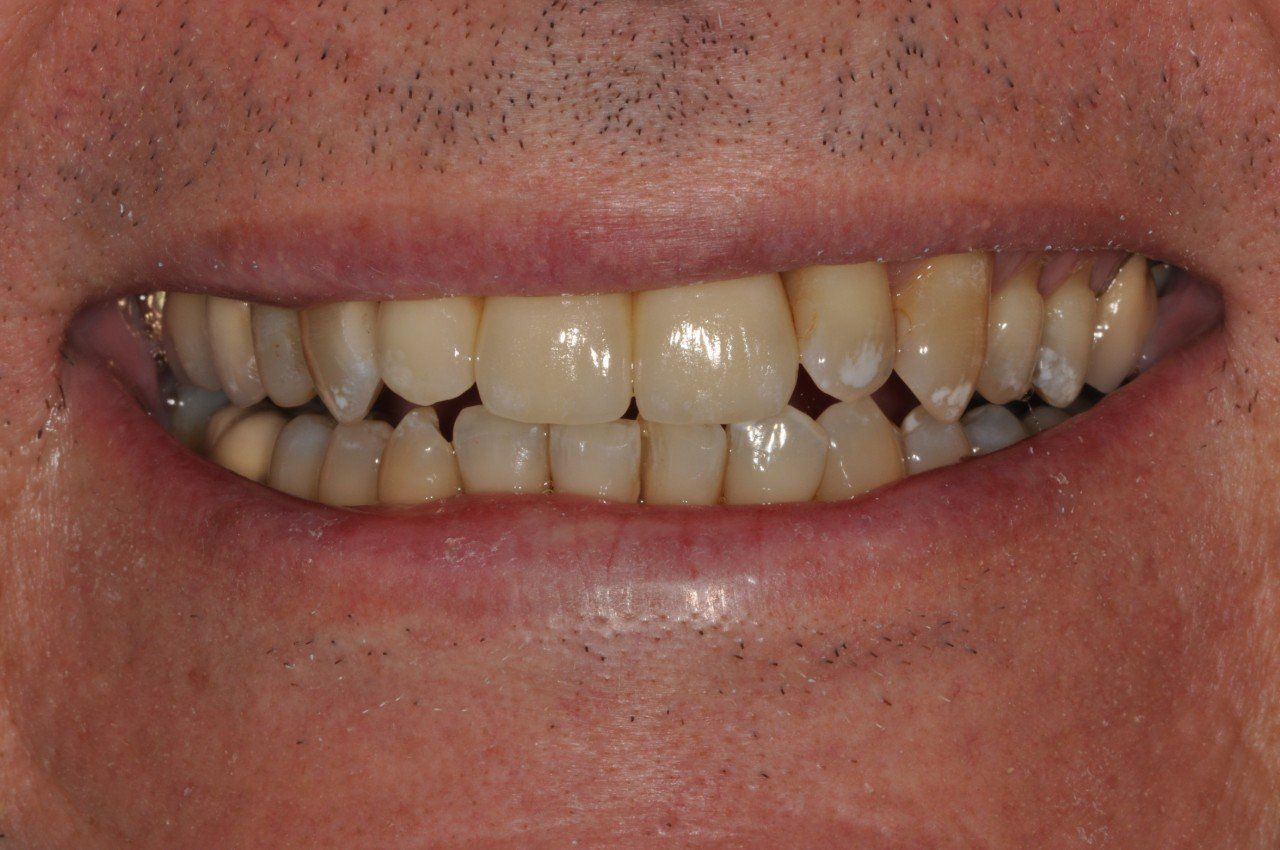IMPLANT SUPPORTED TEETH
Many patients chose dental implants to replace single teeth, several teeth, or to support a full set of dentures.
What are dental implants and why might they be right for you?
Advantages
- The appearance is very good and the teeth feel natural.
- They are very useful in cases where a person naturally has slight spaces between their teeth. With a single tooth implant these spaces can be reproduced.
- They are permanently fixed and not removable, which means there is no movement during eating and speaking.
- They are looked after just like natural teeth, there is no need to take them out for cleaning.
- Implants and their supported teeth do not get decay.
- The metal used in implants is titanium. This is a safe, biocompatible metal to put in your body.
- The remaining teeth are left intact and carry no extra load as the implant teeth support themselves.
- An implant can be used in cases where teeth on either side of the gap may not be strong enough or suitable to support bridgework.
- They help to maintain and support the surrounding gum.
- By replacing missing teeth, they stop adjacent and opposing natural teeth from shifting.
- Where we can, the artificial teeth are screwed onto the implant fixture. This means if there are any problems, the teeth can be removed, adjusted, and even repaired.
- If the implant ever does need to be removed, any of the other options could still be used to fill the gap.
- Implants are very common now, 1 in every 100 adults has one.
Disadvantages
- Because the implant is rigidly fixed in the bone, the patient needs to have stopped growing. Otherwise the adjacent teeth will grow down below the implant, and make it appear to 'submerge'.
- The procedure is technically demanding, especially when replacing multiple teeth.
- Treatment involves surgery to place the implant fixtures in the jaw.
- There must be enough bone in the jaw to support the implant fixtures, a problem if teeth have been missing for a long time, the jaw is thin, or the sinus is close.
- The crown/bridge or denture may chip, wear or break and need replacement during it’s life
- Implants have a higher failure rate in people that grind their teeth, smokers, diabetics, patients with a history of periodontal (gum) disease, patients with a genetic predisposition, and patients with poor oral hygiene.
- While treatable, all implants still have a risk of developing peri-implantitis (5% of patients after 5 years). Follow this link for more information.
- The implant process takes a minimum of three months. Complex cases may take to a year or longer and involve multiple dental visits.
- Implant treatment is more expensive than other options.
Longevity & Cost
The implant fixtures will last a long time, possibly the rest of your life. Scientific studies of all implants show success rates of 96.5% at 11 years.
It is important to understand that the artificial teeth (crown, bridge or denture) require regular maintenance and that they will wear with use.
Porcelain crowns are very colour stable and after many years the colour of the crown may not match the colour of the adjacent teeth. While the implant fixtures remain in place, the worn, damaged or mismatched teeth they support may need removal for repair or replacement. We would expect the teeth to last at least 10-15 years before this was required.
Cost varies greatly depending on the treatment plan, prosthesis design and choice of material. As a guide, total cost, including the surgeon’s fees are:
- $6,500 - $7,000 for a single tooth
- $7,500 for two teeth supported on one implant
- $13,000 for two single teeth on two implants
- $13,000 - $14,000 for a 3-tooth bridge on two implants
- $13,000 for an implant supported lower denture
- $24,000 - $36,000 for a full implant supported bridge
What does implant treatment involve?
1. Diagnosis & Treatment Planning
Options to build up bone
2. Implant placement
(B) A ‘healing abutment’ is attached to the top of the fixture, protruding just through the gum.
Normal temporary teeth
Immediate loading & temporary teeth
(D) If there is sufficient healthy bone, a temporary crown or bridge can be placed on to the implant fixture at the time of surgery. This is called immediate loading. It is very useful for visible missing teeth. Patients can have the implant and temporary crown placed on the same day. However, this technique puts extra force on the healing implant. Immediate loading does have an increased risk of failure, but the success rates for immediate loaded implants and conventional implants are still both high. The oral surgeon will advise us if this immediate loading is possible.
3. The Healing Period
4. The Final Crown, Bridge or Denture
Replacing two missing front teeth with implant crowns
Replacing two missing premolar teeth with an implant bridge
Replacing a fractured incisor tooth using the natural tooth as a veneer
Replacing a single incisor with an implant crown
Replacing a narrow lower incisor with an implant crown
Combining crown and implant treatment to replace four front crowns
Replacing implant crowns from the 1980's
Replacing four front teeth with an implant bridge
Replacing a failed tooth supported bridge with an implant supported one
Discover Dental

